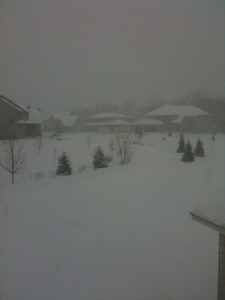I’m reading The Ghost Map by Steven Johnson, which tells the whats, hows and whys of the 1854 London cholera epidemic. This morning I came across this passage:
For millennia, most cities had been bound inexorably to the natural ecosystem that lay outside their walls; the energy flowing through the fields and forests around them established a population ceiling they couldn’t grow beyond. London in 1854 had shot through those ceilings, because the land itself was being farmed more efficiently, because new forms of energy had been discovered, and because shipping and railway networks had greatly expanded the distance that energy could travel. The Londoner enjoying a cup of tea with sugar in 1854 was drawing upon a vast global energy network with each sip: the human labor of the sugarcane plantations in the West Indies and the newly formed tea plantations in India; the solar energy in those tropical realms that allowed those plants to flourish; the oceanic energy of the trade currents, and the steam power of the railway engine; the fossil fuels powering the looms in Lancashire, making fabrics that helped fund the entire trade system.
It’s this network, which of course has today developed far, far beyond that which served London in 1854, that the proponents of the local food movement fail to apprehend, much less understand. Now, don’t get me wrong; if you think you get, for example, the best tomato eating experience by purchasing locally-grown heirloom varieties, and you’re willing to pay the higher cost they command, more power to you. But if you think that example somehow represents an ideal way to feed the populace of any city, you’re more than a bit misguided. As Londoners had already discovered over 150 years ago, you can’t feed a populace of any significant size with locally grown produce.
Local foodies miss another important point as well: a very small fraction of what they enjoy today could even possibly be grown nearby. Bloated and wealthy local food enthusiasts in New York would be dismayed indeed to find the simple banana struck from the list of what they could eat should their “utopia” ever be realized.





